Understanding the Inner Workings of Autistic Brains
Autism Spectrum Disorder (ASD) encompasses a diverse range of neurodevelopmental differences rooted in complex brain mechanisms. To comprehend how autistic brains work, it is essential to explore structural, functional, and neurochemical variations that influence perception, cognition, and behavior. Recent advances in neuroimaging and molecular studies are providing new insights into the unique neural landscapes of autistic individuals, revealing a rich tapestry of differences, strengths, and developmental trajectories.
Differentiating Structural and Functional Brain Changes in Autism
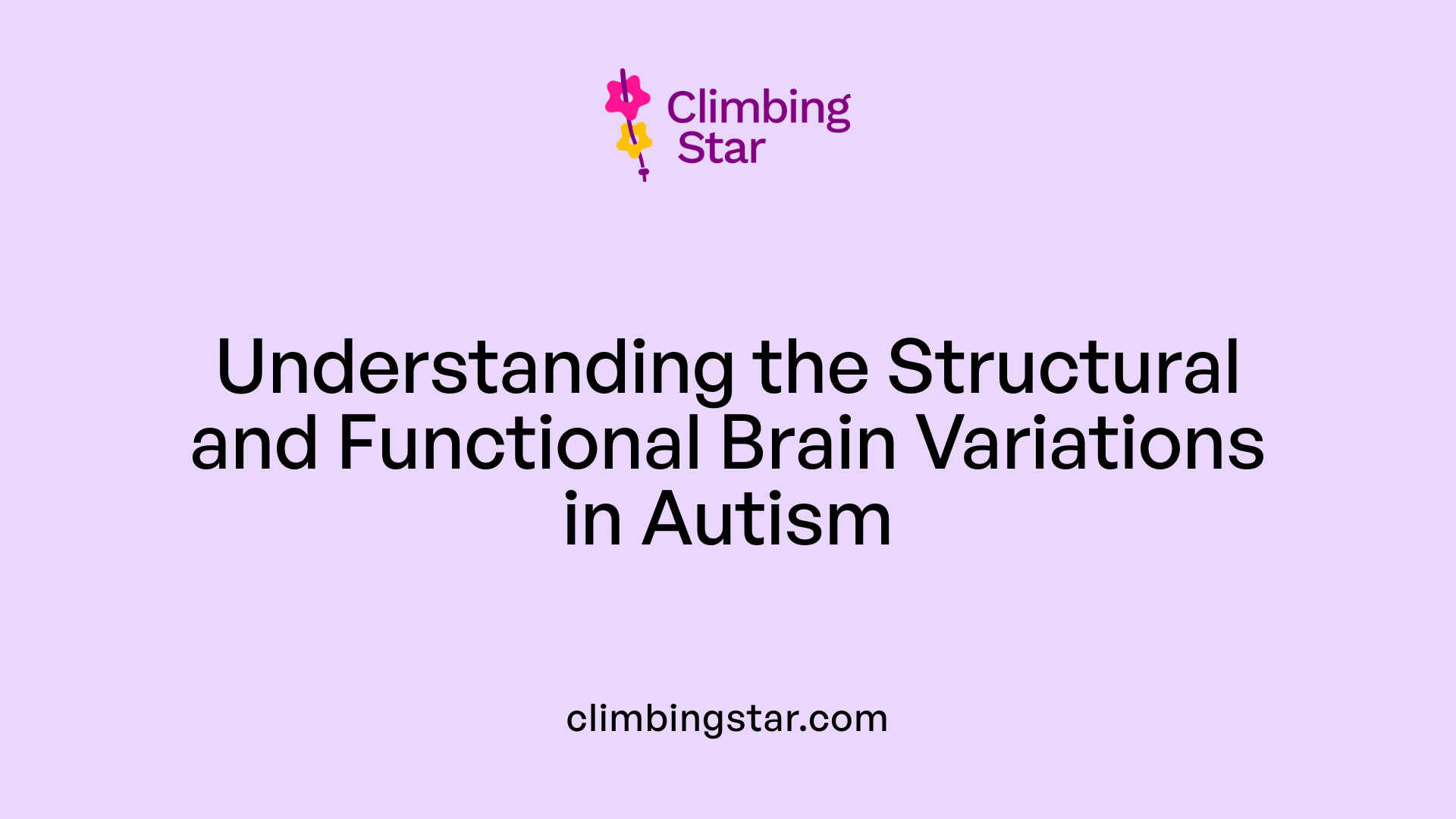
What are the structural and functional differences observed in autistic brains?
Autistic brains present a variety of structural differences compared to neurotypical brains. During early development, regions such as the frontal cortex often experience early overgrowth, with increased volume and cortical thickness. This overgrowth tends to normalize or even reverse with age, leading to smaller sizes in some areas during adulthood.
In addition to gross structural changes, microscopic alterations are evident. These include differences in neuron organization, such as altered cortical minicolumns, and disruptions in neuronal migration. For example, some regions like the cerebellum show hypoplasia, meaning underdeveloped tissue, particularly involving Purkinje cells, which are crucial for motor and cognitive functions.
The amygdala, an essential structure for emotion processing, tends to be enlarged in young children with autism, possibly affecting social and emotional behaviors. However, its size may decrease or stabilize later in life.
On the functional side, neural activity patterns differ markedly. Studies using brain imaging techniques reveal atypical connectivity; autistic brains often display increased short-range connectivity but decreased long-range connectivity. This disruption influences complex behaviors such as social interaction, communication, and sensory integration.
At the molecular level, gene expression changes related to inflammation, neural transmission, and stress response are observed. These molecular differences are thought to contribute to the structural abnormalities and altered neural signaling seen in autism.
Developmentally, abnormal processes like neurogenesis, migration, and regionalization may be involved, driven by genetic and epigenetic factors such as WNT, FGF, and Notch signaling pathways. These alterations contribute to atypical brain size, organization, and circuitry.
In summary, structural abnormalities like early overgrowth and microstructural disruptions, combined with altered functional connectivity patterns, form the neurobiological foundation of autism. These differences help explain the diverse behavioral and cognitive profiles observed in autistic individuals, emphasizing the condition's complex neurodevelopmental origins.
Neuroanatomical Variations and Developmental Patterns
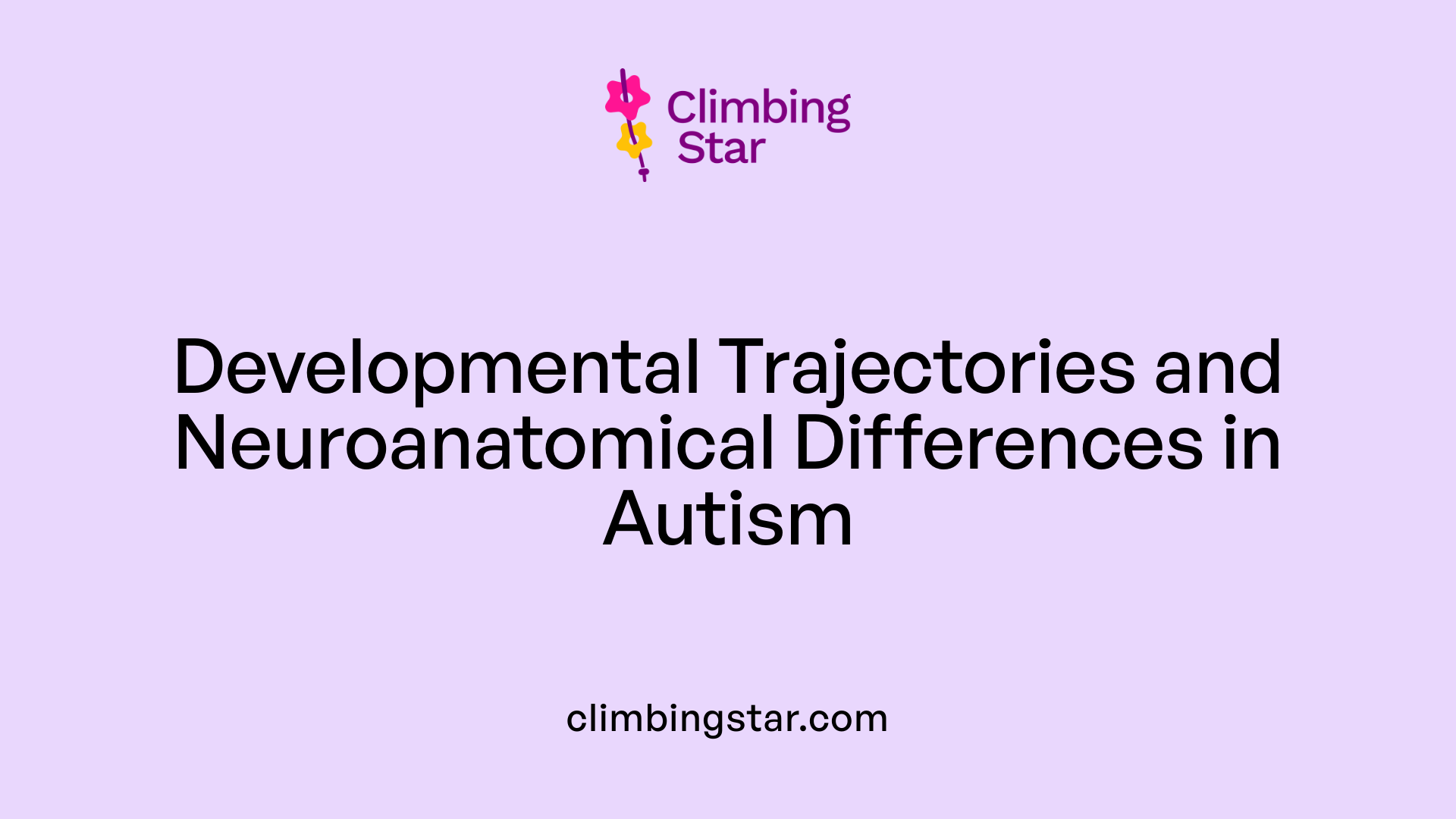
What are the characteristics, causes, and developmental aspects of autistic brains?
Autistic brains display unique developmental trajectories compared to neurotypical individuals. One notable feature is early brain overgrowth, which is particularly evident in key regions such as the cortex, amygdala, and cerebellum. This rapid expansion often occurs within the first year of life, with some abnormalities observable as early as six months old.
Following this surge, growth tends to slow down or stabilize prematurely, leading to regional size differences that can persist into adulthood. Structural variations include abnormalities in grey and white matter volumes, along with disrupted neuronal organization and synaptic density. These differences are connected to altered neural connectivity, often characterized by increased short-range and decreased long-range connections.
At the microstructural level, there are changes in neuron types, organization, and cortical layering. Molecular studies reveal differences in gene expression associated with neural transmission, immune activity, inflammation, and inhibitory signaling pathways like GABA.
The causes of these developmental differences are multifaceted. Genetic factors play a significant role, with genes related to immune response, neural development, and stress regulation being involved. Environmental influences during pregnancy, labor, and early childhood also contribute to shaping brain structure.
These neurobiological variations influence how the brain circuits form and function, impacting behaviors characteristic of autism. Disrupted early neurodevelopmental processes, such as neuron migration and circuit formation, may underpin core features like social communication difficulties, repetitive behaviors, and sensory sensitivities.
Ongoing research continues to uncover links between immune dysfunction, neurodegeneration, and connectivity alterations, helping to better understand the complex developmental landscape of autism.
| Aspect | Features | Implications |
|---|---|---|
| Early brain growth | Rapid overgrowth, especially in cortex, amygdala, cerebellum | Affects early cognitive and social development |
| Structural differences | Grey/white matter volume changes, disrupted organization | Influences neural circuitry and information processing |
| Connectivity alterations | Increased short-range and decreased long-range connections | Impacts complex task execution, social interaction |
| Molecular and genetic factors | Gene expression changes in immune, neural, and GABA systems | Underpin structural and functional brain differences |
| Developmental timing | Abnormal circuit formation during critical early periods | Leads to long-term behavioral and cognitive traits |
This constellation of features underlines the complexity of autistic brain development, emphasizing both the structural and molecular modifications that emerge early on and evolve with age.
Synaptic Density and Neural Connectivity
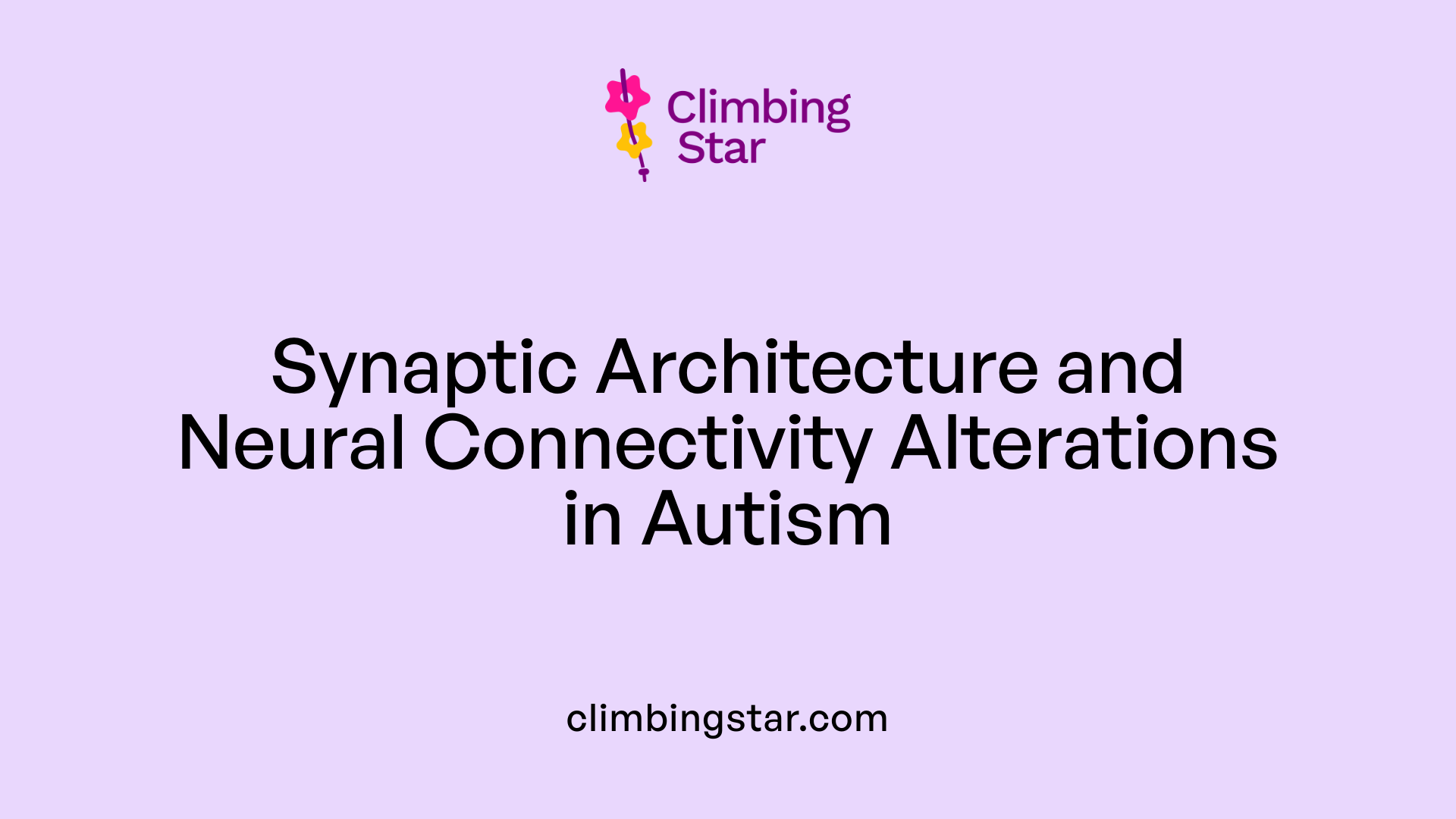
What does scientific research say about synaptic density and neural connectivity in autism?
Recent advances in imaging technology, particularly positron emission tomography (PET) scans, have allowed researchers to measure synaptic density directly in living humans for the first time. Studies utilizing the radiotracer 11C-UCB‑J revealed that autistic adults have about 17% less synaptic density across the entire brain compared to neurotypical individuals. These findings suggest a fundamental difference in how autistic brains develop and function.
Synaptic connections are vital for neural communication. In autism, the balance between excitatory and inhibitory (E/I) signals is often disrupted. Specific research indicates an increase in excitatory synapses alongside a decrease in inhibitory ones, especially in the prefrontal cortex. This imbalance impacts how neural circuits operate, potentially contributing to challenges with social interaction and repetitive behaviors.
Genetic studies further support these neurobiological differences. Mutations in genes such as NRXN, NLGN, SHANK, and FMR1 influence the formation, maintenance, and pruning of synapses. Disruptions in these pathways can lead to excess or damaged synapses that are not properly refined during development, often due to dysregulation of processes like the mTOR pathway and autophagy.
Connectivity pathways within the brain also show marked differences. Individuals with autism tend to have reduced long-range connectivity, which affects the integration of information across different regions. Conversely, they often exhibit heightened short-range connectivity, leading to overprocessing of local information.
Collectively, these alterations in synaptic density and connectivity underpin many cognitive and behavioral features of autism. They highlight a complex neural landscape where disrupted communication between brain regions and imbalanced synaptic function contribute to the diverse traits associated with the spectrum.
Neural Activity and Sensory Processing in Autism
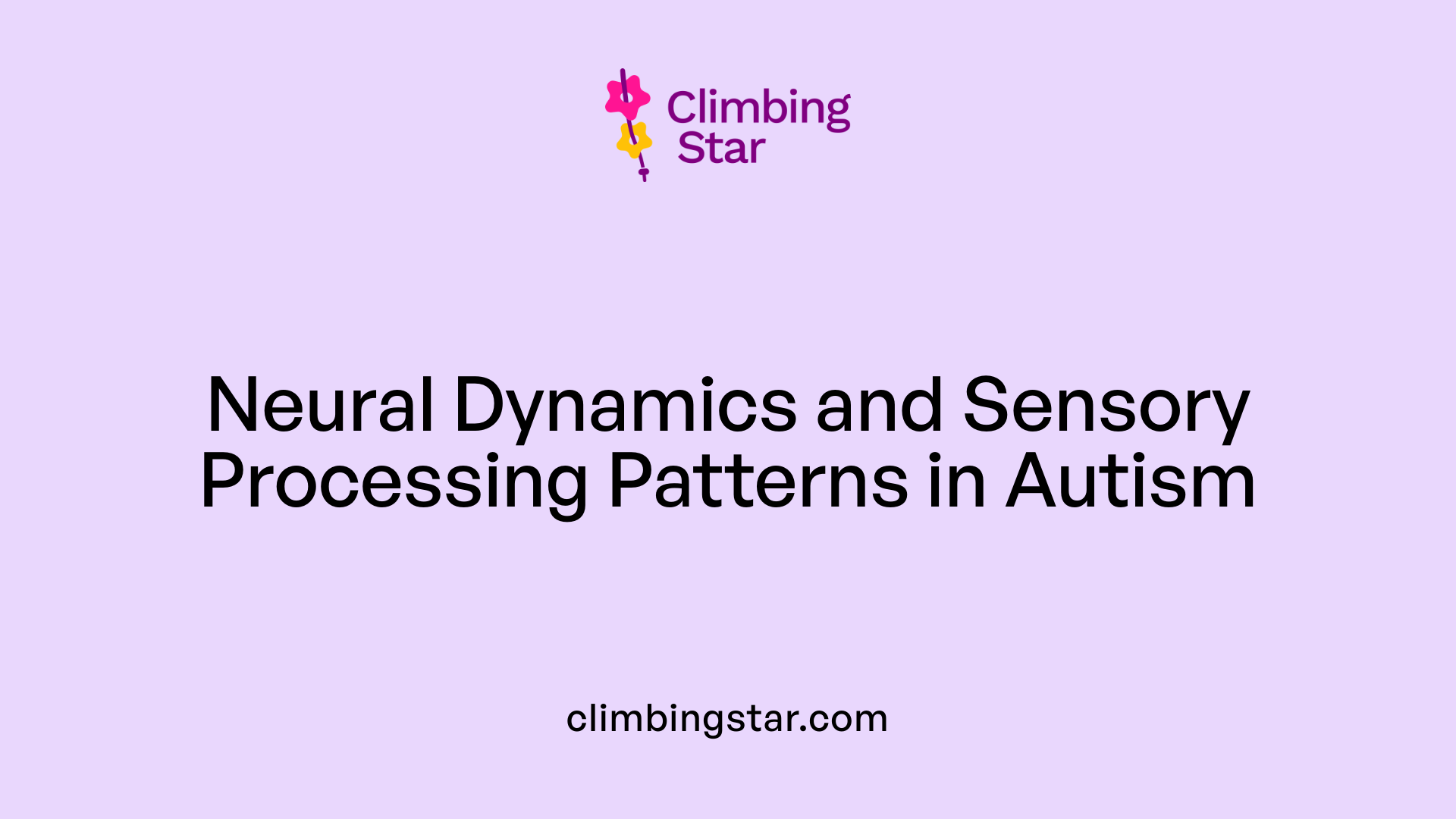
How does sensory processing manifest in neural activity patterns in individuals with autism?
In autism, sensory processing differences are closely linked to distinct neural activity patterns in the brain. These patterns involve altered connectivity pathways, with a tendency toward weaker long-range connections that link different brain regions together, and stronger short-range connections within local circuits.
This imbalance affects how sensory information is filtered and integrated. As a result, many autistic individuals experience sensory gating dysfunctions, making it difficult for the brain to properly modulate incoming stimuli. Such dysfunctions manifest behaviorally as hypersensitivity (overreacting to stimuli), hyposensitivity (underreacting), or unusual perceptions, which can lead to sensory overload or heightened sensitivity.
Neural mechanisms like excitatory/inhibitory (E/I) imbalance—where the normal balance between excitatory and inhibitory signals is disrupted—further contribute to this atypical sensory neural activity. Disrupted multisensory integration, which is the process by which the brain combines sensory data from different modalities, also plays a role.
These neural activity patterns create a sensory experience that can be overwhelming or confusing, influencing behaviors such as avoidance of certain stimuli, seeking out intense sensory inputs, or experiencing distress during sensory overloads. Understanding these neural dynamics offers insight into why sensory processing appears so varied in autism, from heightened reactivity to muted responses.
| Aspect | Description | Impact on Behavior |
|---|---|---|
| Connectivity Patterns | Reduced long-range, increased local connectivity | Distorted sensory integration, hypersensitivity or hyposensitivity |
| Neural Mechanisms | E/I imbalance, disrupted multisensory integration | Sensory overload, sensory seeking, or avoidance |
| Manifestations | Atypical neural activity leads to varied sensory responses | Over- or under-reactivity, perception distortions |
Overall, these neural activity differences form the biological basis of the diverse sensory manifestations in autism, influencing how individuals perceive and react to their environment.
Cognitive Processing and Strengths in Autism
How does autism affect cognitive processing?
Autism spectrum disorder (ASD) has a profound impact on how the brain processes information. People with autism tend to perceive and learn differently, often emphasizing details over the bigger picture. This detail-focused processing can lead to strengths in areas like pattern recognition, problem-solving, and attention to detail.
However, these same neural differences may present challenges. For example, individuals with autism might struggle with flexible thinking, adapting to new situations or changing routines. Response inhibition, or the ability to suppress automatic responses, can also be affected, making it difficult to shift attention or suppress repetitive behaviors.
Neurobiological influences such as atypical brain connectivity—where long-range communication between brain regions is reduced—and imbalances in neurotransmitters like serotonin and glutamate play roles in these cognitive differences. Structural abnormalities in areas like the prefrontal cortex and temporal lobes contribute to difficulties with social cognition, including understanding social cues and emotions.
Furthermore, sensory processing differences, including hypersensitivity or hyposensitivity to stimuli, can overwhelm cognitive resources and affect learning and perception. These factors, combined with immune system influences and neuroinflammation, shape the unique cognitive profile of autistic individuals.
Over time, some aspects of cognition, particularly verbal skills, may improve with targeted interventions. Nonetheless, core challenges in social understanding and interpreting implicit social cues tend to persist. These persistent differences influence social interactions, daily functioning, and learning experiences throughout life.
What is the impact on perception and learning?
Autistic individuals often excel in tasks that require focus on specific details, leading to advantages in fields like mathematics, music, or art. Their learning can be driven by strong interests and deep engagement with specific topics, a phenomenon known as monotropism.
Conversely, the differences in how information is processed can mean that they need tailored educational strategies to overcome challenges in generalization and flexible thinking. Sensory overloads and difficulties filtering relevant from irrelevant stimuli may hinder learning and concentration.
Understanding these cognitive styles is crucial for creating supportive environments that leverage strengths while accommodating challenges, fostering better educational and social outcomes.
Influences of Genetics and Environment on Autism Neurobiology
What are the characteristics, causes, and developmental aspects of autistic brains?
Autistic brains develop differently from early childhood, displaying unique structural and functional features. One hallmark is early brain overgrowth, especially in the cortex, amygdala, and cerebellum during infancy. This rapid growth is followed by a plateau or slower development as the individual ages, leading to distinctive brain size and organization.
Structurally, autistic brains often show variations in grey and white matter volumes. There are changes in neural organization, such as altered patterns of cortical thickness and abnormal folding (gyri and sulci). These structural differences often relate to disrupted neural connectivity, with evidence pointing to reduced long-range connections and increased short-range connections. At the microstructural level, there are alterations in synaptic density—typically a 17% decrease across the brain in autistic adults—contributing to differences in how neural signals are processed.
On the molecular scale, gene expression profiles related to immune response, neural transmission, and inhibitory signaling systems, especially GABA, differ from neurotypical individuals. These molecular differences influence neural development, possibly leading to atypical circuit formation and connectivity.
The causes of these neurobiological variations are complex and involve genetic and environmental factors. Various genes associated with immune function, neurodevelopment, and stress response play a role in shaping brain features. Environmental influences—such as prenatal stress, exposure to neurotoxic compounds, and early life exposures—also impact brain development.
These combined genetic and environmental factors disrupt normal neurodevelopmental processes like neurogenesis, neuronal migration, and circuit formation. Consequently, they contribute to the core features of autism, including social communication challenges, repetitive behaviors, and sensory sensitivities. Ongoing research aims to unravel these complex interactions, which influence individual differences and potential subtypes within the autism spectrum.
Unique Features, Strengths, and Neurodiversity
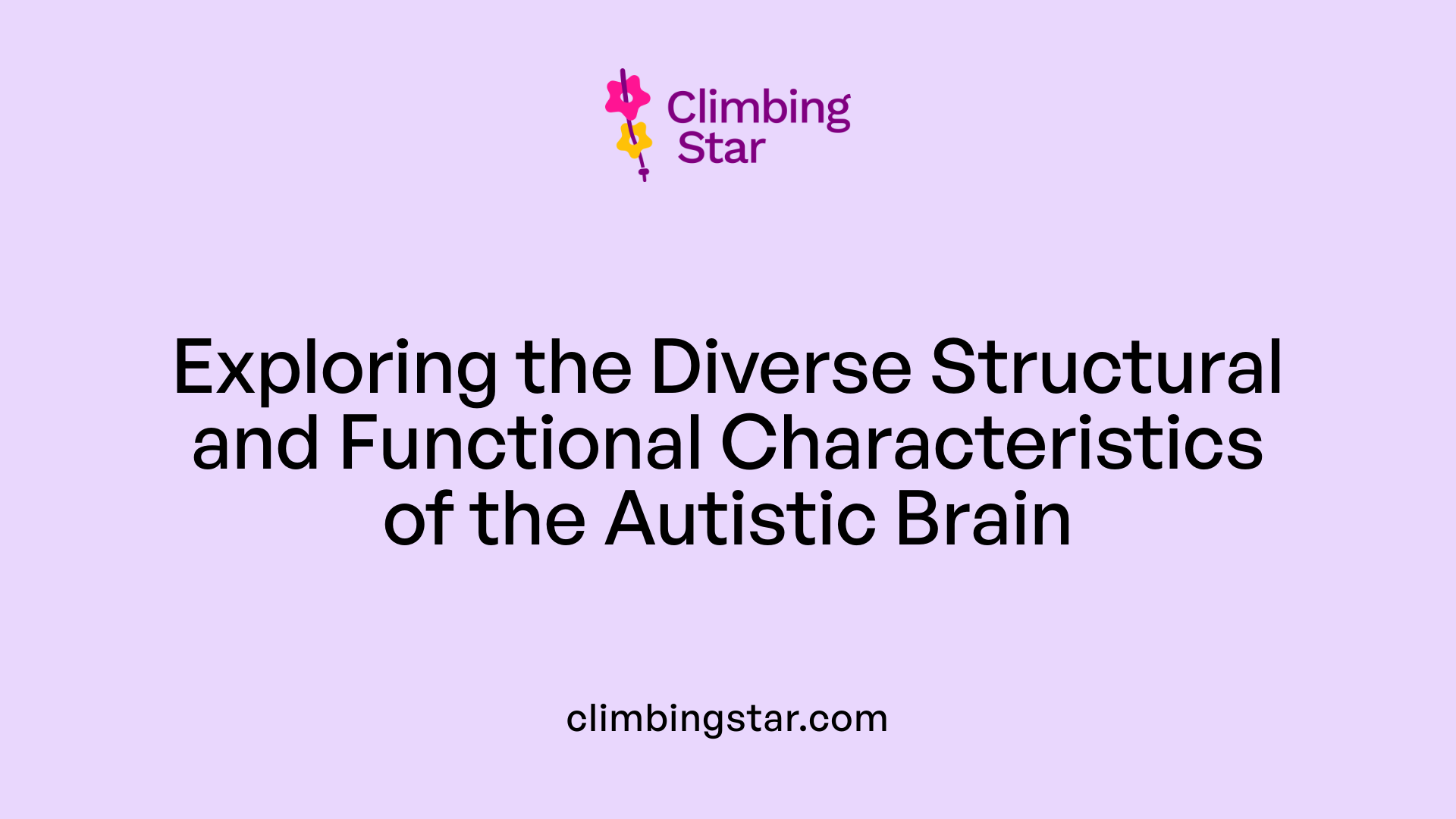
What are the neuroanatomical variations and strengths observed in autistic brains?
Autistic brains show a variety of structural differences that highlight the diversity within neurodevelopmental pathways. During early development, regions such as the frontal cortex often experience overgrowth, contributing to differences in social, cognitive, and motor functions.
Structural analyses reveal variations in grey matter, white matter, and microstructural organization. For instance, there is often increased cortical surface area between 6 to 12 months of age, and altered patterns of brain folding, particularly in the left parietal and temporal lobes, and in the right frontal region. These differences suggest changes in how neurons connect and communicate across different parts of the brain.
Microstructural disorganization, such as wider minicolumns and focal cortical dysplasia, is also common. Additionally, significant reductions in Purkinje cells, a crucial neuron type in the cerebellum involved in movement and cognitive functions, are frequently observed.
The amygdala, a brain structure important in processing emotions, tends to be larger in early childhood in many autistic individuals, with neuron numbers fluctuating across development. These changes are linked to social and emotional processing difficulties.
Stress on connectivity is evident, with altered axonal tracts affecting communication between distant brain regions like the cerebellum, thalamus, and prefrontal cortex. These connectivity patterns often involve decreased long-range and increased short-range neural connections.
Genetic studies add another layer, revealing disruptions in gene pathways such as FGF, WNT, and mTOR that regulate regional brain development and organization.
Despite the structural differences, many autistic individuals possess notable strengths. Enhanced perceptual processing, attention to detail, and accelerated problem-solving skills have been documented in research. These strengths can help explain the heterogeneous presentation of ASD, emphasizing the importance of a neurodiversity perspective that values different ways of thinking and perceiving.
Autistic brains are neither entirely better nor worse; instead, they exemplify a broad spectrum of neural development, fostering diverse talents and abilities that challenge traditional notions of neurotypical standards.
The Neurobiological Spectrum of Autism
Understanding how autistic brains work involves integrating insights from structural neuroanatomy, neural connectivity, functional activity, and molecular biology. While variability is inherent, common themes such as early brain overgrowth, altered synaptic density, and atypical connectivity patterns highlight the neurodevelopmental basis of autism. Recognizing the neurodiverse nature of these brain differences allows for a nuanced appreciation of both challenges and strengths, emphasizing the importance of personalized approaches in research and intervention. As science advances, unraveling the intricate workings of autistic brains promises to foster greater understanding, acceptance, and support for individuals across the spectrum.
References
- A Key Brain Difference Linked to Autism Is Found for the First ...
- Autism Spectrum Disorder: Autistic Brains vs Non- ...
- Information processing differences
- Brain structure changes in autism, explained
- Autism Spectrum Disorder (ASD) Symptoms & Causes
- How Does the 'Autistic Brain' Work?
- The neuroanatomy of autism – a developmental perspective







